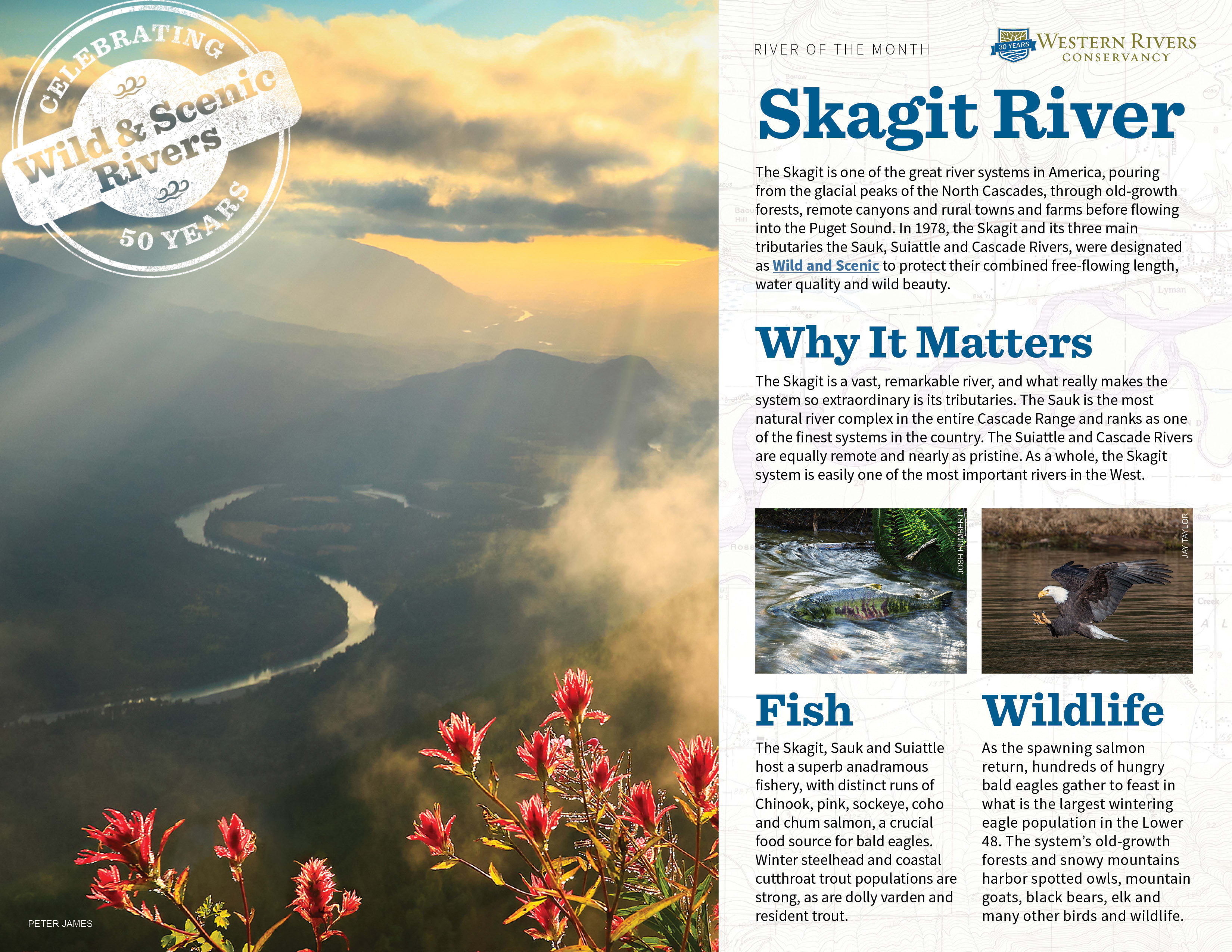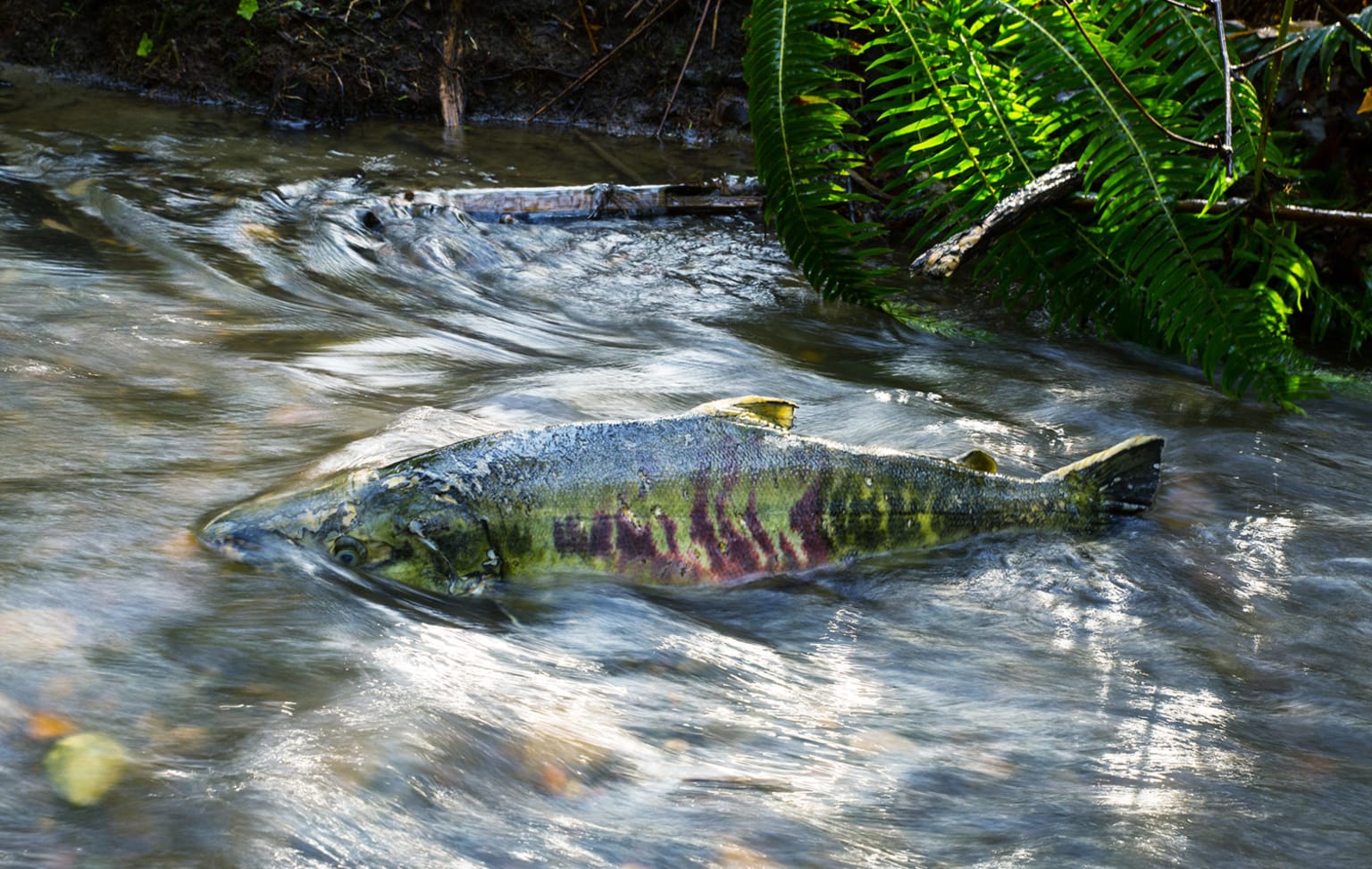
Fish
The Skagit, Sauk and Suiattle host a diverse anadramous fishery, with distinct runs of Chinook, pink, sockeye, coho and chum salmon, a crucial food source for bald eagles. Winter steelhead and coastal cutthroat trout populations are strong, as are dolly varden and resident trout.
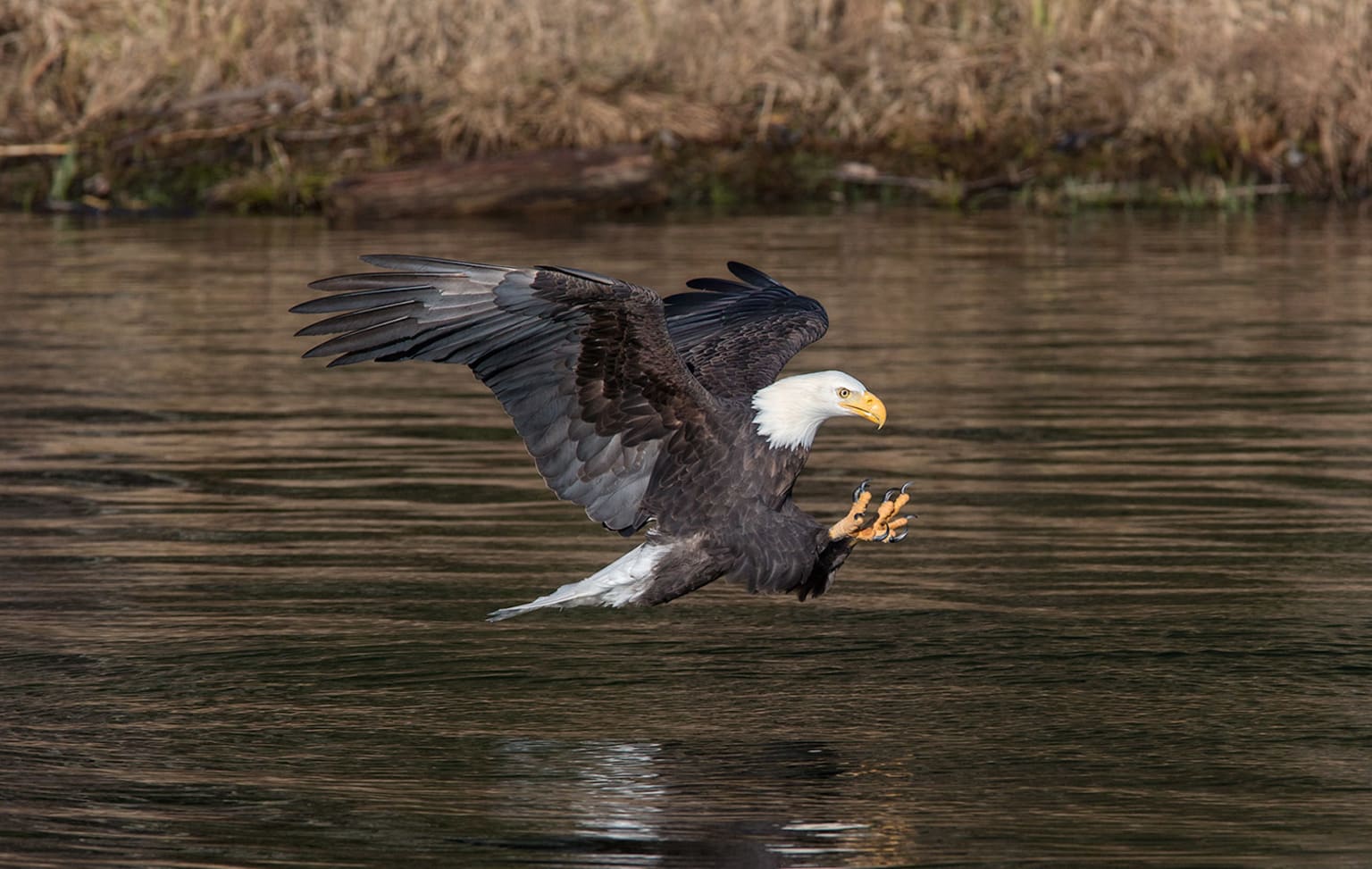
Wildlife
As the spawning salmon return, hundreds of hungry bald eagles gather to feast in what is the largest wintering eagle population in the Lower 48. The system’s old-growth forests and snowy mountains harbor spotted owls, mountain goats, black bears, elk and many other birds and wildlife.
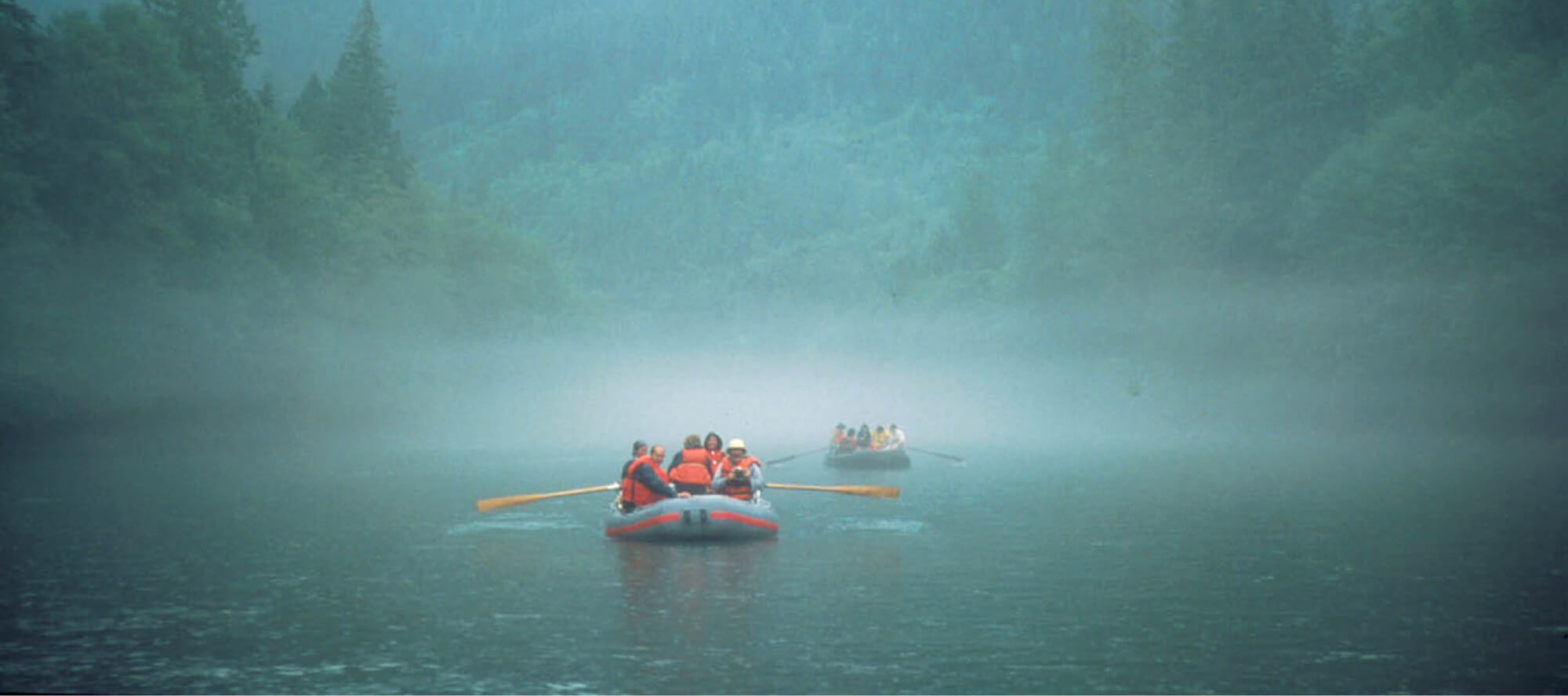
-
Hike
Abundant, impossibly scenic trails await you, like the White Pass-Pilot Ridge Loop, a 30-mile backpacking route from the ancient forests of the North Fork Sauk up to the Pacific Crest. The Suiattle River Trail winds above its namesake stream through lush, old-growth forests. North Fork Sauk Falls is one of many hikes off Mountain Loop Hwy.
-
Fish
The Skagit is one of the world’s legendary steelhead streams and birthplace of the Skagit cast (a breed of fly casting that uses heavy lines and big flies). But fish runs have been in steep decline, and the river now opens only seldomly. Emerald Water Anglers is a local guide service and excellent resource.
-
Birding
Each January, the Skagit Eagle Festival features eagle watching stations at the Skagit River Bald Eagle Interpretive Center and other locations off Route 20. Remember to bring the binoculars!
-
Paddle
A winter float on the lower Skagit is one of the best ways to view eagles. For splashy, Class II summer fun on the upper Skagit, start at Goodell Creek. For wild whitewater on the Sauk, put in at the White Chuck or Lower Sauk Boat Launch (a site WRC protected). The Suiattle features a premier Class III wilderness run from Sulphur Creek to Rat Trap Bridge and on to the Sauk. Many outfitters lead day-long adventures.
The WRC Story
While the upper reaches of the Skagit system are protected, downstream logging and development have taken their toll. Starting in 1990, WRC took the lead with the U.S. Forest Service to ensure these streams remain wild and scenic havens. WRC acquired over 2,300 acres along the Skagit, including four islands and backwater sloughs critical to salmon and steelhead.
To protect the Sauk’s world-class fishery, WRC bought 154 acres of mining claims in the Henry M. Jackson Wilderness Area in 1994 to prevent disastrous gold mining. In 1998, we purchased 26 acres at the Sauk River Bridge to establish the much-needed Lower Sauk Boat Launch.
In 2000, WRC protected the confluence of the Sauk and Suiattle Rivers from logging that would have degraded high-quality salmon spawning areas. All of these lands are now protected within national forests and wilderness areas.
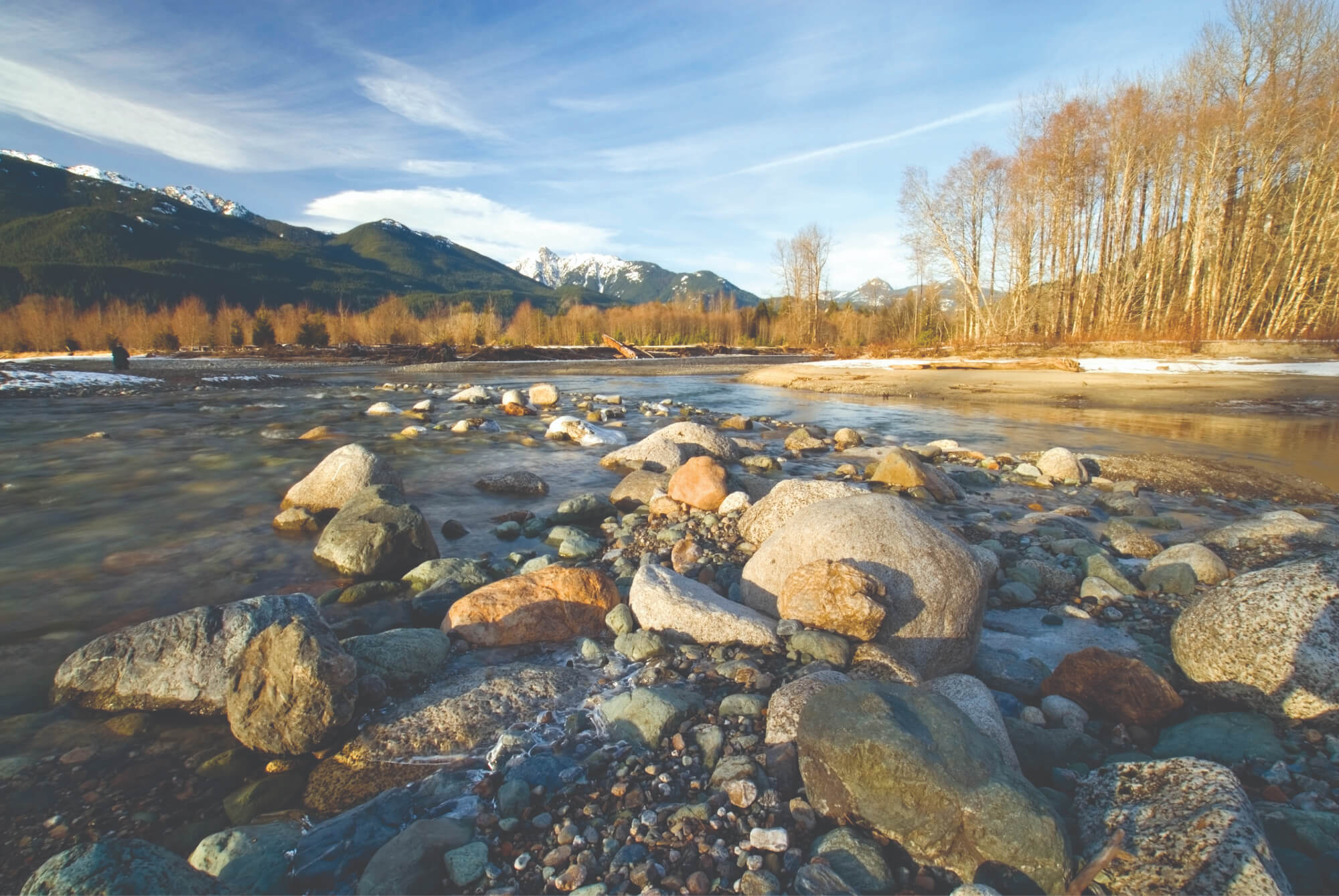
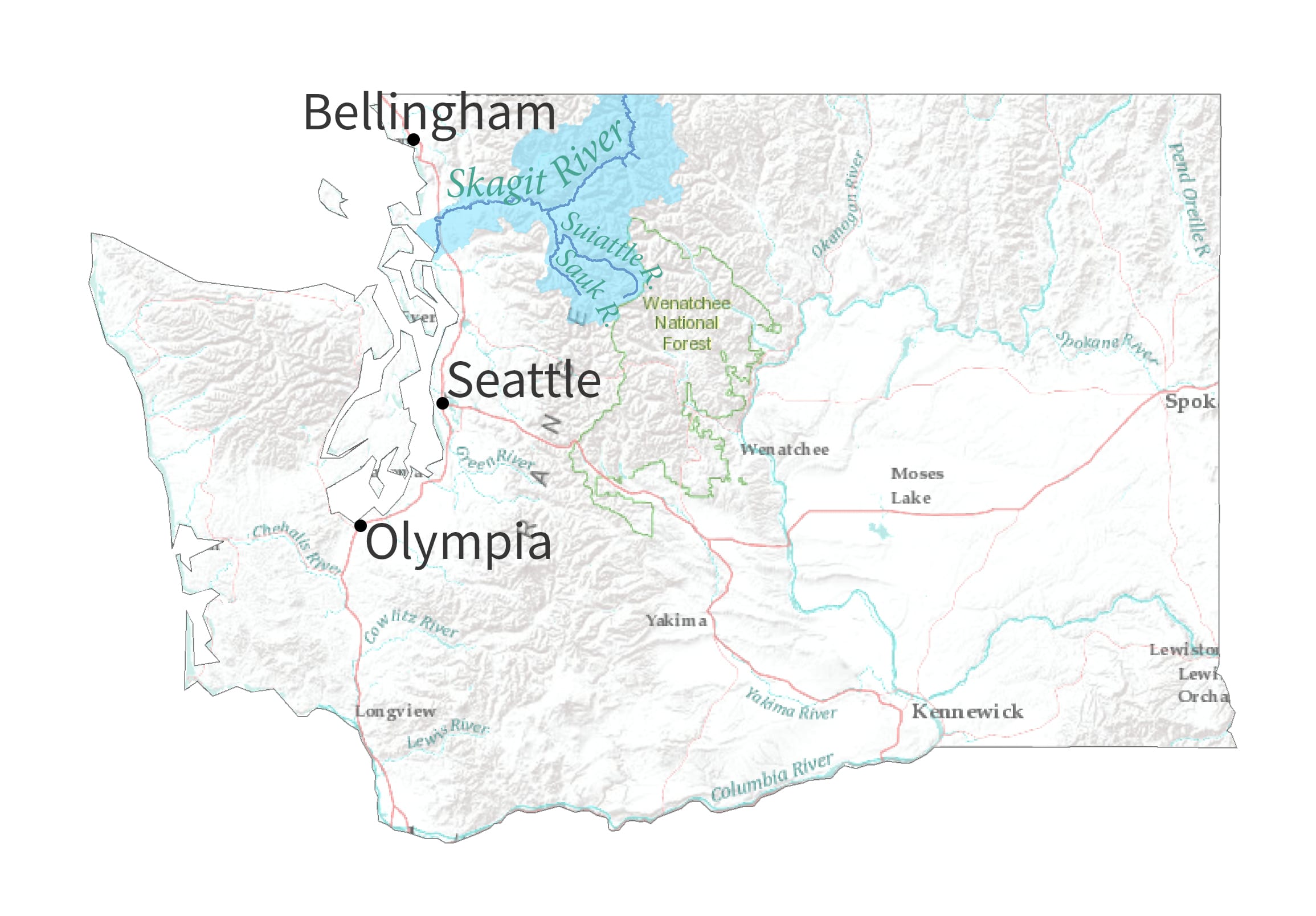
Best Time of Year
- Salmon fishing
- Subject to WDFW regulations
- Steelhead fishing
- Subject to WDFW regulations
- Boating
- Year-round
- Eagle viewing
- Nov to Feb

